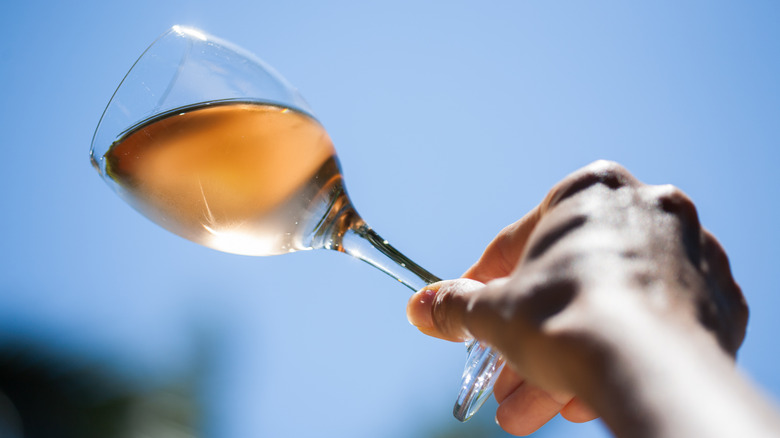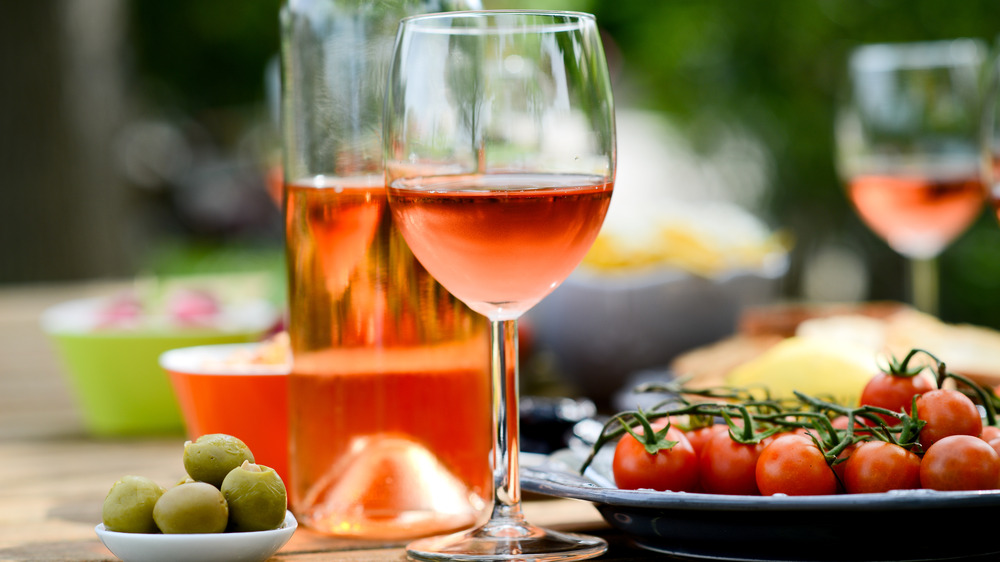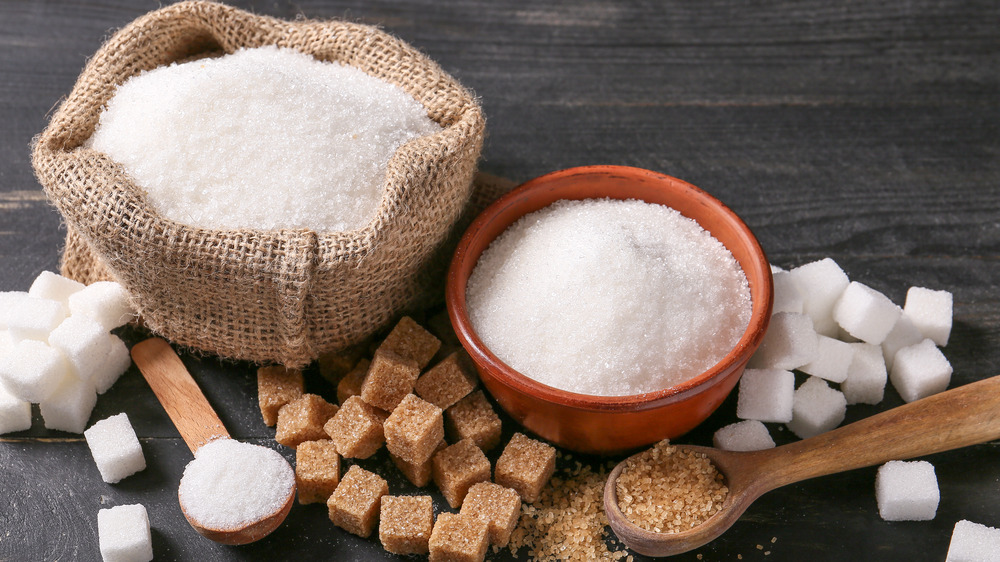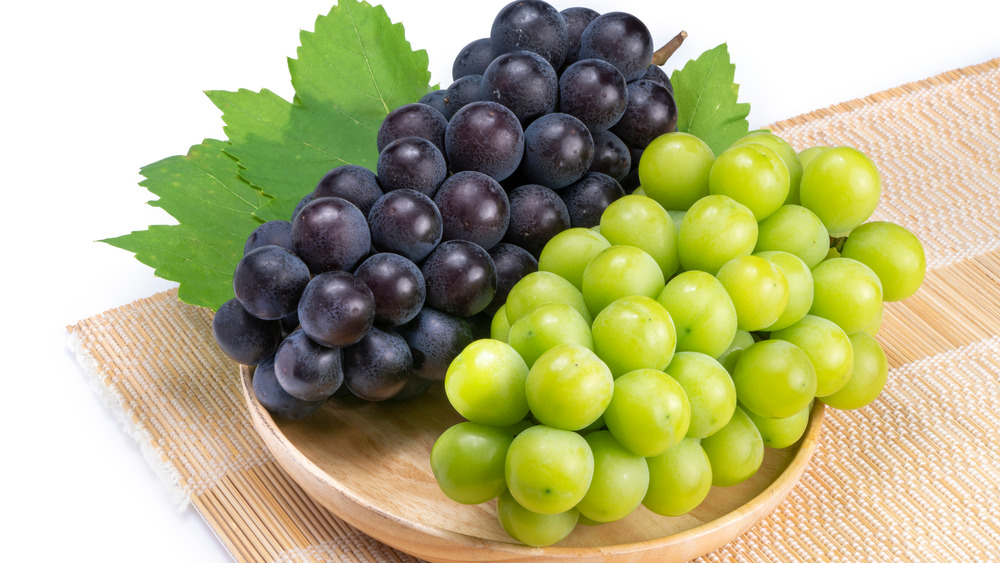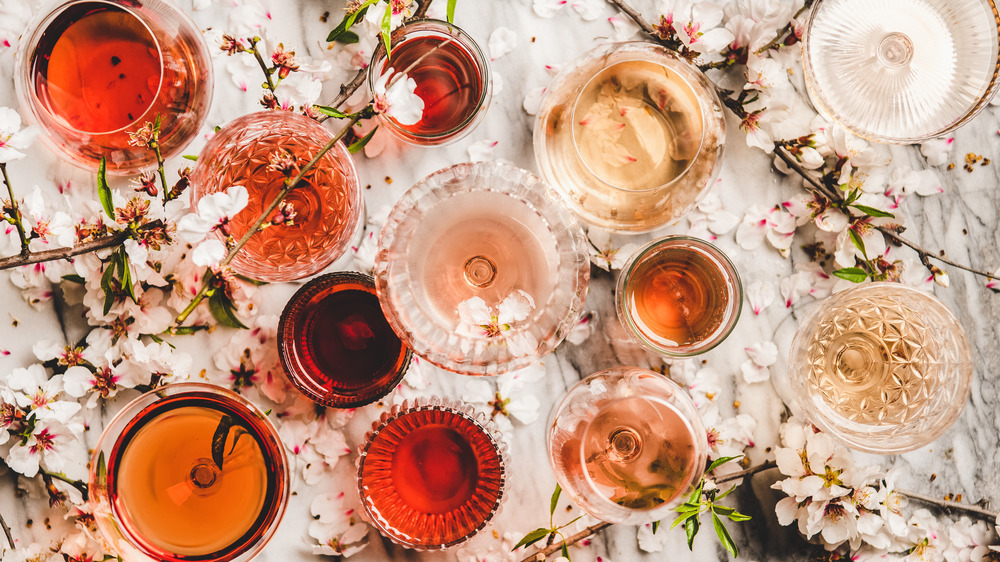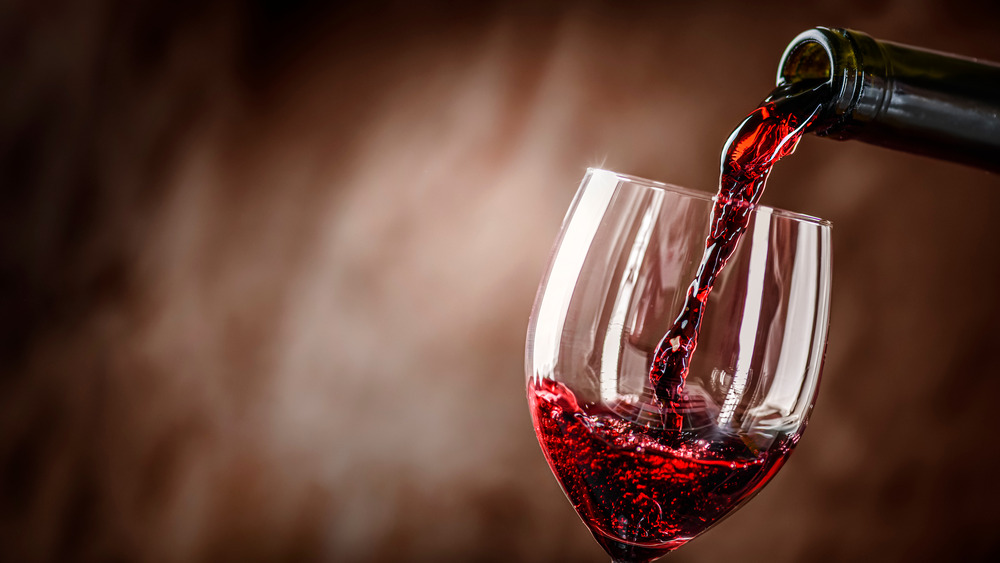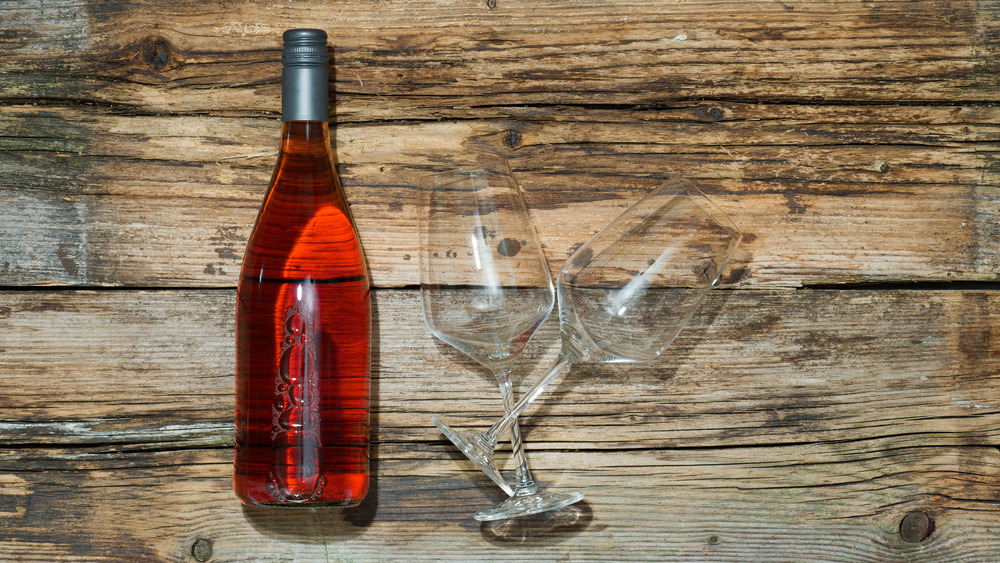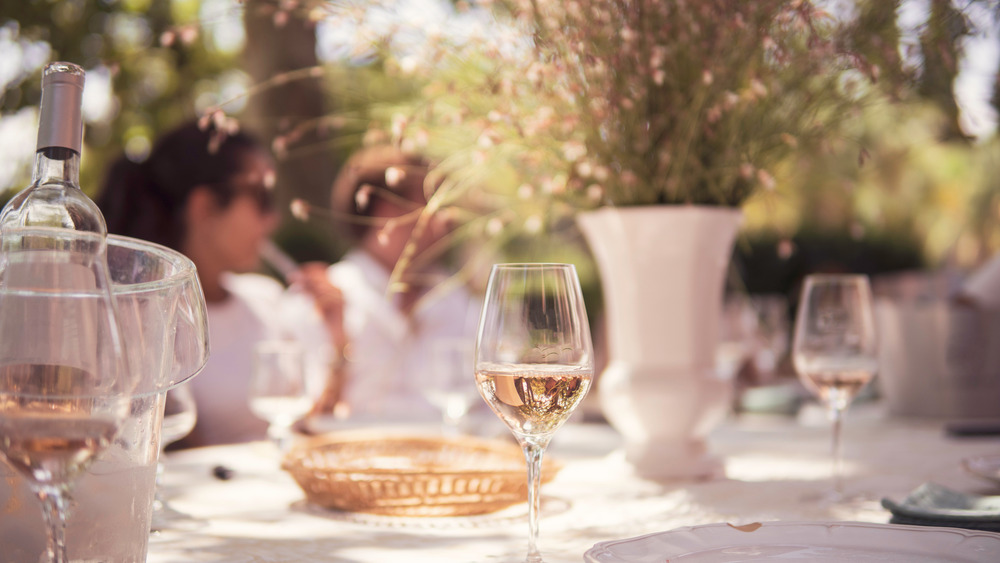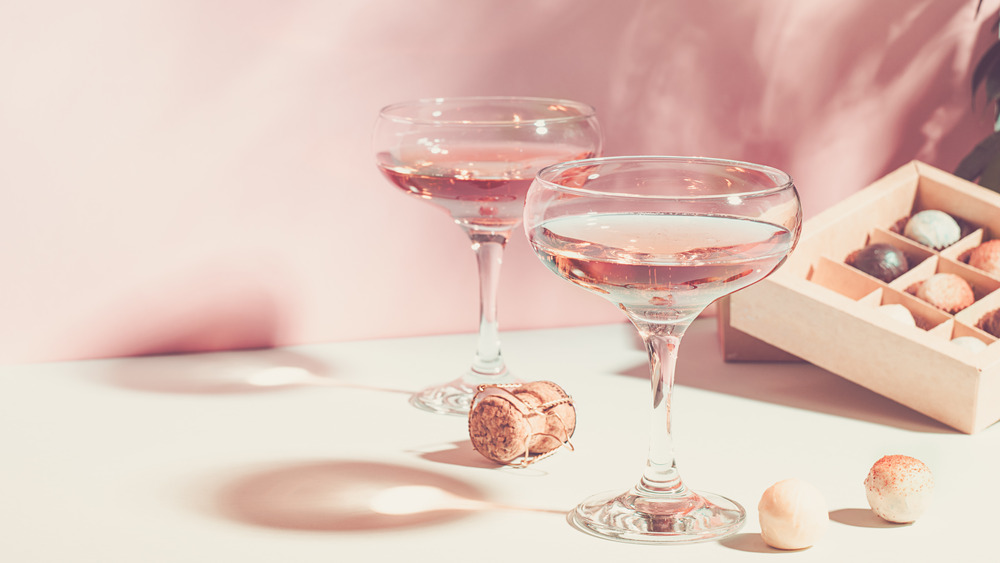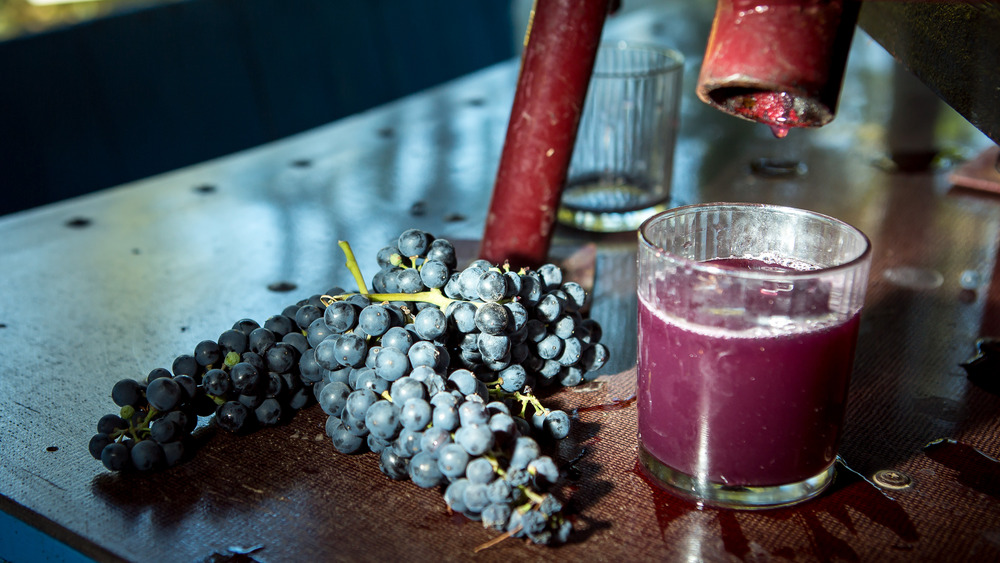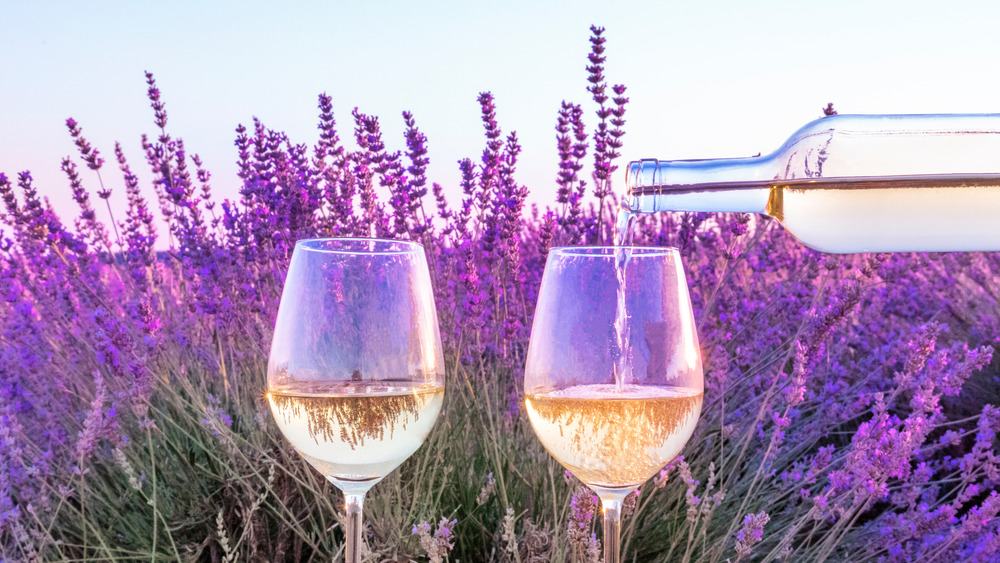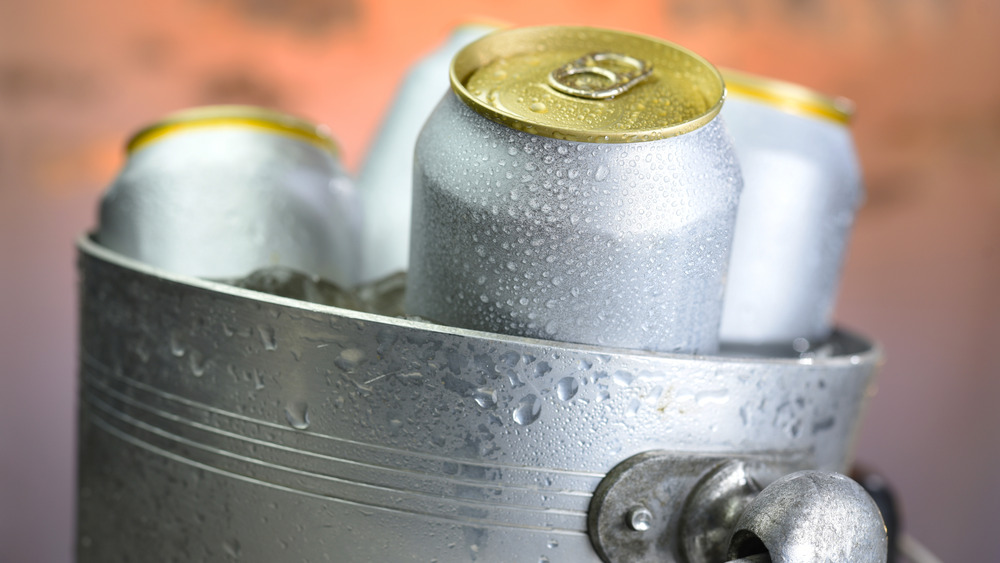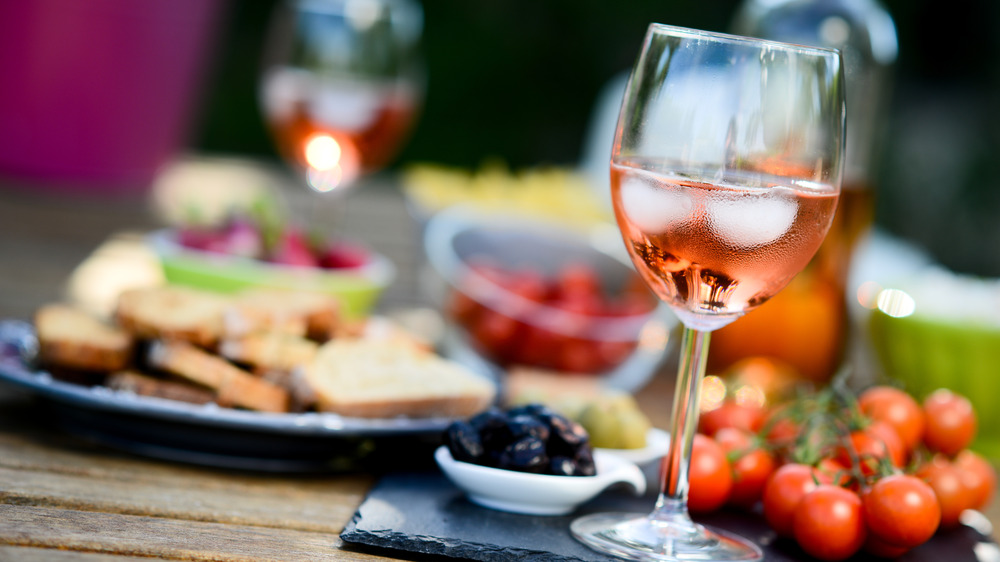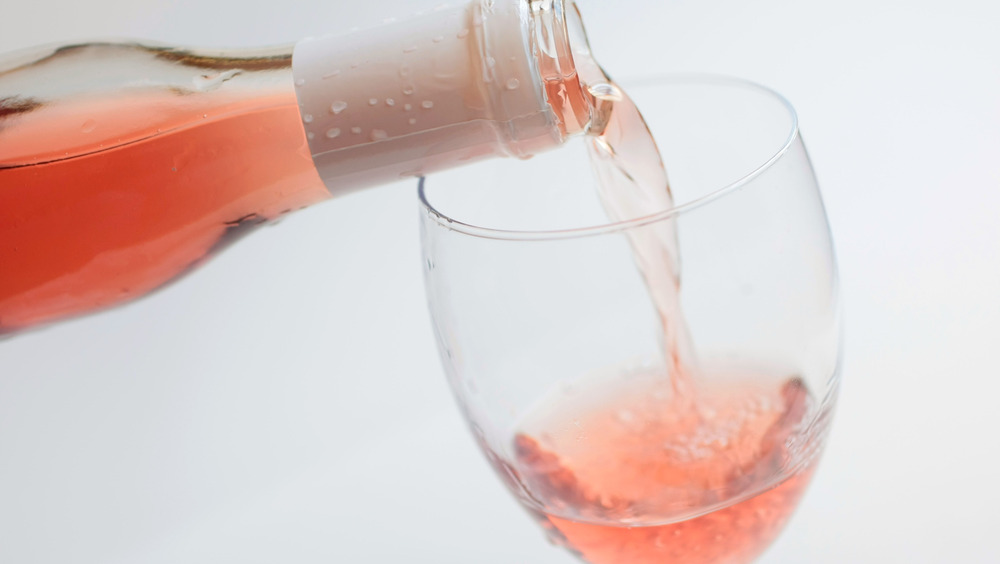What You Need To Know Before You Take Another Sip Of Rosé
Before you top up your glass, there are a few things you need to know about this delightful pink wine that has been a favorite of picnics, dinner parties, and a relaxing glass at the end of the day.
To be perfectly honest, rosé has gotten a bit of a bad reputation amongst some wine aficionados. It's often associated with what many believe is an overly sweet White Zinfandel or it's simply linked to basic folks who don't know what they like to drink. Well, guess what? Some wine lovers who know what they like actually enjoy rosé. And if you do too, it's time to stop feeling bad about it. Rosé is a kind of wine with its own rich history and wonderful tastes to rival any other variety.
We chatted with some of the foremost wine experts to myth-bust everything you thought you knew about rosé, and to shed some light on the industry secrets behind this truly exquisite warm-weather tipple. So fill up a glass with something cold and pink, and get ready for a ride through the wonderful world of rosé.
Rosé doesn't have to be sweet
The association between pretty pink rosé and high sugar content is an unfortunate misconception that Tanisha Townsend, Chief Wine Officer of Girl Meets Glass, attributes to the fact that in the U.S., for a long time, "people thought all rosé was White Zinfandel, which is sweet. Because of this association," she continues, "all rosé got the reputation of being sweet."
Caroline Conner, the owner of Wine Dine Caroline, agrees. "White Zinfandel is very popular in America, and it is a sweet, bright pink magenta rosé," she says. "It's something that was very popular and is still very popular because it tastes like juice."
Certified sommelier Jocelyn Clark asserts that, after White Zinfandel became popular "kind of by accident" in the 1970s, it became the rosé of reference for Americans until they began drinking French rosé, usually from Provence, in the 2000s. It was only then, she explains, "that people started realizing that rosé could be dry and delicious."
Sugar is a choice is rosé and other wines
Though many people associate rosé with a sugar-laced taste, even White Zin doesn't have to be sweet. Like the sweetness of any wine, Conner explains, "sugar is a winemaking choice. It's not a given, it has nothing to do with the grape variety, it has nothing to do with anything other than winemaking choices."
The proof is in the pudding: winemakers like California's Halleck Vineyard are producing dry White Zinfandels to keep up with the contemporary demand for dry rosé in the United States. Clark asserts that most rosé in the States is dry these days, but she also notes that some folks without the vocabulary to explain different flavor sensations in a glass of wine may still sense a sweetness to it, all because of the natural presence of fruit aromas in their glass.
"A lot of people taste fruit in a wine — especially the strawberry, cherry, raspberry notes in a rosé — and their brain translates that to sweet," she says.
Rosé is made with red wine grapes
There are two main colors for grape varietals used in wine: red and white. Thus, we get red and white wines, though that's admittedly a bit of a simplification. So, how do you get rosé, the in-between cousin? Not by blending the two, as you might assume, but rather by vinifying red grapes like you would a white wine, as Eater reports. When you do the opposite, that is, vinify white grapes like a red, you get orange wine. But that's a different story for a different day.
You see, the juice of any grape, be it red or white, is clear. It's the contact with the skins that gives your Bordeaux and Burgundies their deep red hue. To make a rosé, instead of leaving the grapes on the lees (industry speak for the mashed up skins) as one would for red wine, the juice is strained after just a few hours so that only a hint of the pink color is left behind.
A winemaker can choose the color of their rosé
Because the color of a wine is ultimately just a question of the length of grape skin contact with the rest of the wine, the depth of a rosé's hue, much like its sugar content, is a winemaking choice.
"If the juice is fermented with the skins longer, the rosé is 'darker' and thereby more flavor is imparted to the wine," says Townsend. "Think of it like the length of time you leave your teabag in water, leave it in longer, it's darker, and your tea is stronger."
The color a winemaker opts to go for often becomes their trademark. "Most of the well-known producers pick a color and stick with it so that their customers know what they're getting each time," says Townsend. "They take the color very seriously and go to great lengths to ensure it remains consistent." This can also vary depending on the region, she says, from the very pale rosés of southern France to the deeper ones that are found more centrally.
The overlap between rosé and red can be hazy
Because a winemaker can essentially choose the color of their rosé by deciding how long to leave the juice in contact with the skins, some winemakers choose to push their rosés almost into the territory of a light red. This is a particularly popular phenomenon in the world of natural wine, a movement that notably seeks to break with established tradition regarding pesticides, machine harvesting, the use of non-endemic yeasts for fermentation, and the addition of sulfites, among other things (via Vox).
"Sometimes it kind of is a 'f— you' to the establishment," says Conner of such potentially confusing wines. The wine in question might look almost like a red in the glass but will likely have much of the fruity quality of rosé. It would be best enjoyed both young and chilled, also much like its rosé cousins. Moreover, since there are no real rules governing what can and cannot be called a rosé, these wines straddle that line beautifully.
Very pink rosés aren't sweeter – but they are richer
Once again, we're back to the sugar question. Because they can look like White Zin, a lot of folks assume that a really deep magenta rosé will be sweeter, but that just ain't so. "The sugar level has nothing to do with that," says Conner. "You cannot see that."
But a darker rosé will indeed have a different flavor from a paler one, Conner asserts. Much as its color has intensified, so, too, will its flavors and aromatics. "A darker one is going to be smellier, basically," says Conner. "It's going to be more aromatic and more ripe smelling. More fruity smelling. And often with more of the red wine aromatics over time and things like funk."
This often means that darker rosés are excellent food wines, great for pairing with things like assertive cheeses or even grilled meats. So, while you won't necessarily be getting a mouthful of sugar with your glass, you will likely be getting a more intense flavor overall.
Pale rosés are almost indistinguishable from whites
Paler rosés, on the other hand, "tend to smell more like white wine," says Conner. "A Provençal rosé can almost be indistinguishable from Pinot Grigio." These rosés tend to be easy drinking without too much intensity.
"They're nice because they're kind of inoffensive and a little bit floral and a little bit fruity," says Conner, "but they're not that intense."
Consider pairing these rosés with dishes you would usually enjoy with a glass of white wine, like light goat cheese or a simple, savory tart. Since these wines are common in Provence, they also tend to pair well with summery Provençal fare, like salade niçoise or grilled white fish. But the most common way to enjoy this sort of rosé is as an apéritif: a pre-dinner drink alongside simple savory snacks like chips, pretzels, or olive tapenade on toast points.
Red and white don't mix, except in Champagne
There's one exception to the rule of skin-contact rosés, and that's Champagne. According to Wine Enthusiast, two methods are allowed for making pink Champagne. First, there's the saignée or "bled" method, which is basically what we described above. Then, there's the assemblage or "assembly" method, where a certain amount of Pinot Noir or Pinot Meunier wine is added to Chardonnay. This method is far more common in Champagne production and usually results in a pink blend that tends to be less intense in flavor than the saignée wines.
While winemakers who are making Champagne-style sparkling wine in other places can and do use this trick, Conner notes that "it would be atypical elsewhere." Those who do take advantage of it would likely keep it under wraps, she says. As for mixing red and white in your own glass to make a rosé? Uh... best not. Let's leave that to the professionals, shall we?
Some rosé is a byproduct of making red wine
Most of the time, winemakers set out to make rosé from the very beginning. Sometimes, however, rosé is but a byproduct of making a truly intense red wine. This, Conner notes, is particularly true in Italy.
"There's some rosé winemaking where basically you're trying to concentrate the red," she explains. "So you basically pull off a bunch of juice right at the beginning, and that's your rosé. And then the rest of it stays and macerates."
This process is actually at the origin of the saignée method we described in Champagne, originating the way that some of the juice was "bled" from the tank to help concentrate the red. According to VinePair, the quality of these rosés can be variable, as the concentrated red is really what interests the winemaker, meaning that the rosé produced via this process can be a bit of a second thought. But as rosés continue to skyrocket in popularity, so, too, is the quality of these wines increasing.
Provençal rosé is not the only one worth writing home about
Provençal rosé has become a point of reference in both the U.S. and France, but it's far from the only top-quality rosé out there. Conner recommends Tavel, a richer style of rosé from the Rhône Valley of southern France. Not only are these rosés exquisite food wines, but they also hail from the only AOP-protected area in France that's exclusively rosé, according to Wine Spectator.
Italy also has some lovely rosés, with, notably, a brand-new rosé in the Prosecco appellation that's sure to please fans of the bubbly.
Clark, meanwhile, loves "easy-drinking picnic rosé" from Corsica as well as the "refreshing, fruity" rosés from the Loire Valley and southern French Languedoc. And Townsend loves a Spanish Rosado, which can be fruitier than what one might find in Provence. Clark agrees, applauding the fruity Tempranillo rosé from the Spanish Rioja region.
Bagged and boxed rosé? Go for it
You can be snooty about your white Burgundy if you absolutely must, but rosé just isn't that kind of wine. Conner applauds efforts to make rosé easier to drink at picnics or cookouts with top-notch producers opting for packaging that's too long been associated with poor-quality wines. These days, you can find great rosés packaged with tetra paks, bag-in-box, and even in cans.
Don't let yourself feel guilted into getting a glass bottle every single time. There are certainly places where that may be a hindrance more than a help. "You're going to the beach? You don't need a bottle," says Conner.
Not only are many of these alternative packaging options better for the environment, but they can be permissible in areas that don't allow glass containers and forgiving when you've totally forgotten to pack a corkscrew. They're also easier to keep cool! Take a page out of the beer-lovers handbook and stash your cans in a good, old-fashioned cooler. Or take a page out of Conner's book and, as she says, "stick your cans directly in the river." Just make sure they're properly secured, lest you see them floating away to become yet more waste.
It's totally fine to put an ice cube in your rosé
What if your rosé isn't cold enough? Don't be ashamed to add an ice cube or two, regardless of what some wine purists might say.
"If I am planning a beautiful meal with a beautiful bottle, I will have chilled it," asserts Conner. But if she's sipping rosé in the garden and it just isn't cool enough, she's definitely having a glass of what the French would call rosé piscine, or pool rosé. That is, Conner is just fine having rosé on ice.
"The winemaker isn't like, watching me," says Conner. "I put ice cubes in Provençal rosé for sure. What's it going to do — dilute the wine a little bit? Who cares. It's me. I'm the one drinking it. It doesn't matter. And if it's too warm, it doesn't taste good."
If you're really worried about diluting your wine, and you've thought ahead, you could always freeze a few grapes instead, which will cool the wine without watering it down. You might even consider making ice cubes out of leftover wine, which is also pretty handy whenever a cooking recipe calls for a bit of wine.
Drink up – fast!
Rosé is not the kind of wine you keep for years on end. It's produced to be drunk as soon as possible, "within one or two years," counsels Townsend.
"It is refreshing, light, fruity, acidic, and often dry," adds Clark. "So this usually doesn't lend itself to aging." Of course, this is a generalization, not a rule. "If a rosé wine is high enough in acidity and tannins, it could age well and become more complex over time," explains Clark, giving examples of southern French Bandol or Spanish Rioja rosés that do just that.
She notes, nevertheless, that this is rare, and Conner agrees. While Conner notes that one could cellar rosés like Whispering Angel, which is oaked much like a white Burgundy, or even the rich, deeply hued Tavels from Domaine de la Mordorée, these exceptions do not make the rule. For the most part, the best time to drink your rosé is right now!
